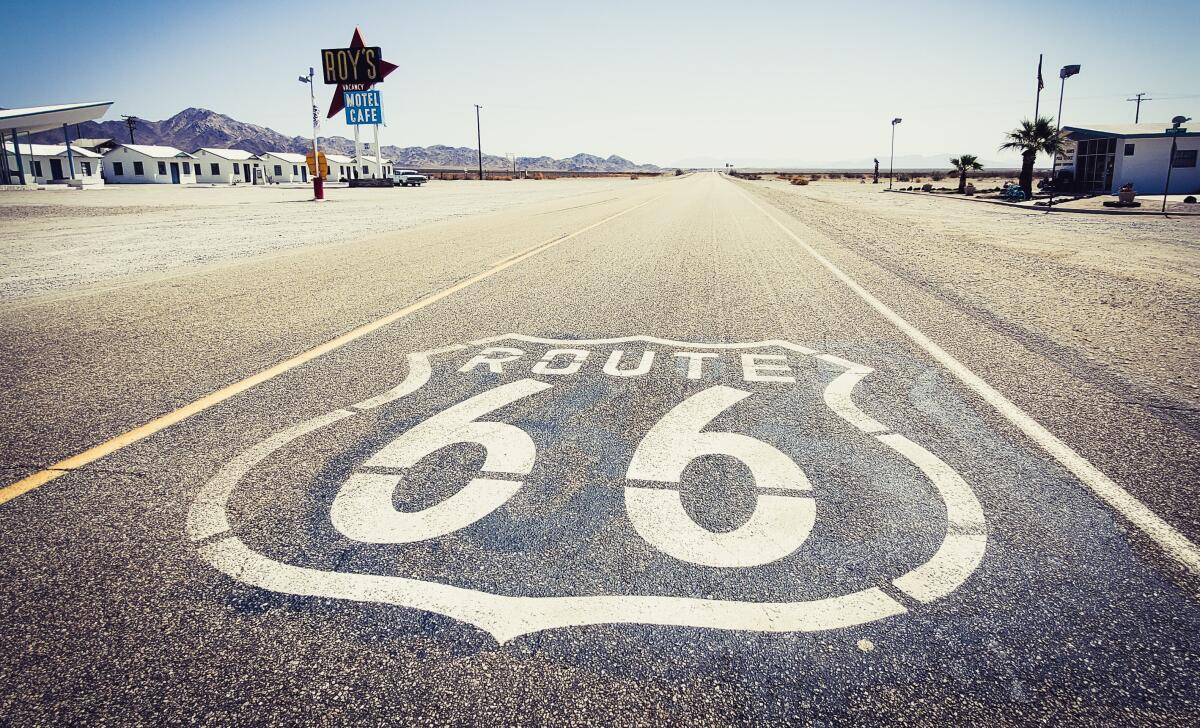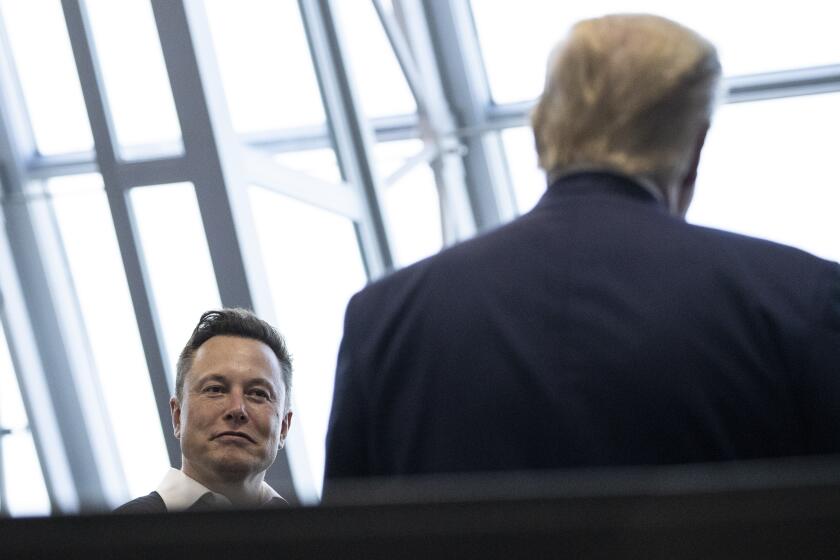Op-Ed: Here’s what I wish I’d known before road-tripping across America

By the time we crossed into California in February 2000, the romance of the road had worn thin. Our tires, too. My college buddy Matt and I had traveled 30,000 miles over six months in a two-seat Honda Civic hatchback. Such boundless horizons! Such a tiny car. And we still had two months to go.
Necessity forced us to tolerate each other’s idiosyncrasies. While in the passenger seat, one of us always slurped hot tea from a giant mug, punctuating each sip with satisfaction, while the other insisted on rolling down the window to do loads of “air laundry.”
We said we wanted “to experience and to document American culture at the turn of the century.” We self-appointed chroniclers — he a guitar-wielding troubadour, I a freelance scribe — drove throughout the contiguous 48 states on a budget of $200 per week. While Matt performed songs from the 1950s to the ’90s in bars and coffee shops, I updated our website with stories and photos, thanks to the wizardry of a dial-up modem and pay phones.
Road-weary though we were, the Golden State offered us comfort, if not rejuvenation, since we had friends in San Diego, Los Angeles and San Francisco. Our California sights included Mission Beach, the set of “Win Ben Stein’s Money,” Pink’s Hot Dogs (and its “bacon dog burrito”), Hearst Castle, a drive up Pacific Coast Highway, El Capitan in Yosemite, and the sequoias.
In San Francisco, we attended a party hosted by an internet startup. The scene was straight from “The Great Gatsby.” One reveler said, “I basically go from dot-com party to dot-com party. This is pretty typical. … Of course, this company has gotten more play because they’re pre-IPO.” That night, I wrote in our travelogue, “Everybody was rich, happy, and festive at the height of the American economic boom.”
Those bubble days — for the tech industry, for Matt and me, for America — swelled with possibility and expectation. Our journals convey this youthful disposition: full of energy, more self-certainty than warranted, earnestness with a touch of naivete. By the end of the trip, after hundreds of wrong turns, we had gained some experience and a little wisdom.
Our entire route would be but the starting point for my larger journey exploring the history of American road trips. Seven years later, I pursued a doctorate in the history of the American West. If only that had come before the big drive, I often think, we might have appreciated specific sites more or chosen other destinations: the San Gabriel Mission; Ft. Ross, once a Russian foothold in the Americas; or Marshall Gold Discovery State Historic Park.
Why didn’t we go to those places? What were we thinking? It’s hard for me to imagine our not-having-seen-America selves. As I think about that time, sepia starts to saturate the corners of those memories. Our younger versions grow distant, inching closer to the historical subjects I now research, knowable only through documents, photographs and other media.
My research into the road trip genre has unearthed deep roots in western expansion and settler colonialism. In the 19th century, the federal government and land companies cleared trails along Indigenous pathways, grabbing and selling lands at the same time. These early travel routes contributed to the dispossession of Indigenous people and formed the core of railroad networks.
By 1900, railroad companies were tempting vacationers to “see America first,” to journey west along their roads, to become acquainted with the country.
It wasn’t too different from how Matt and I approached our trip. “We want to experience America in the present,” I wrote. We aimed to “see America,” to fulfill this “rite of passage.”
Adventurers first crossed the continent by automobile in 1903. The Lincoln Highway, stretching from New York to San Francisco, was completed in 1913, the first transcontinental road for cars. The legendary Route 66, which ran from Chicago through the Southwest to Los Angeles, soon followed. Tourists began writing memoirs. In 1919, a young Dwight Eisenhower bemoaned road conditions on the Army’s first cross-country convoy; it would inspire him as president to fund the interstate highway system in 1956.
Matt and I were influenced by the genre of road books that took hold in the 20th century. Highways paved the way, literally, for two midcentury giants. Jack Kerouac’s novel “On the Road,” based on his own travels, smashed the conformity of the 1950s with its frenetic narrative. (Recent students loathed the book; they recognized its importance but rightly found the representation of women off-putting.) The other, John Steinbeck, published “Travels With Charley: In Search of America” in 1962, the same year he received the Nobel Prize for literature.
These two works may have cemented the genre in American culture, but their authors were not the only itinerant raconteurs. Far from it. John Williams, a Black American author, drove through the Deep South and to California and wrote a series of articles about it for Holiday magazine in 1964, later published as “This Is My Country Too.” The country he encountered, of course, was far removed from Steinbeck’s.
Once you peer behind the midcentury “greats,” scores of unheralded voices emerge. Depending on how you define it — cars only? bicycles? boats? feet? — such journeys stretch back to the beginning of the American experiment.
When I teach my class on American road trips, I reframe the genre to include any mode of transportation — so long as the narrative comments on a greater collective (like the nation, a tribe or a region) and offers some authorial introspection. The automobile may have popularized the genre, but it should not encompass it.
With these criteria, the classroom bursts with historical conversations. How could a Black canoer going down the Mississippi River in the 1980s relate to a white wife on the Santa Fe Trail in 1846? What does William Least Heat-Moon’s cross-country boating reveal that his famous autobiographical travel book “Blue Highways” cannot?
The class changes how my students view road trips. It has also shifted how I perceive my own. Matt and I were not seeking “an American culture” at the turn of the century, chasing the exhaust fumes of Kerouac and Steinbeck. All along our circuitous route, we had been swirling in conversations echoing for centuries, finding our place and ourselves in the larger nation, this ever-strange land.
Andrew Offenburger is an associate professor of history at Miami University in Ohio. He is writing a book on the history of American road trips.
More to Read
A cure for the common opinion
Get thought-provoking perspectives with our weekly newsletter.
You may occasionally receive promotional content from the Los Angeles Times.










